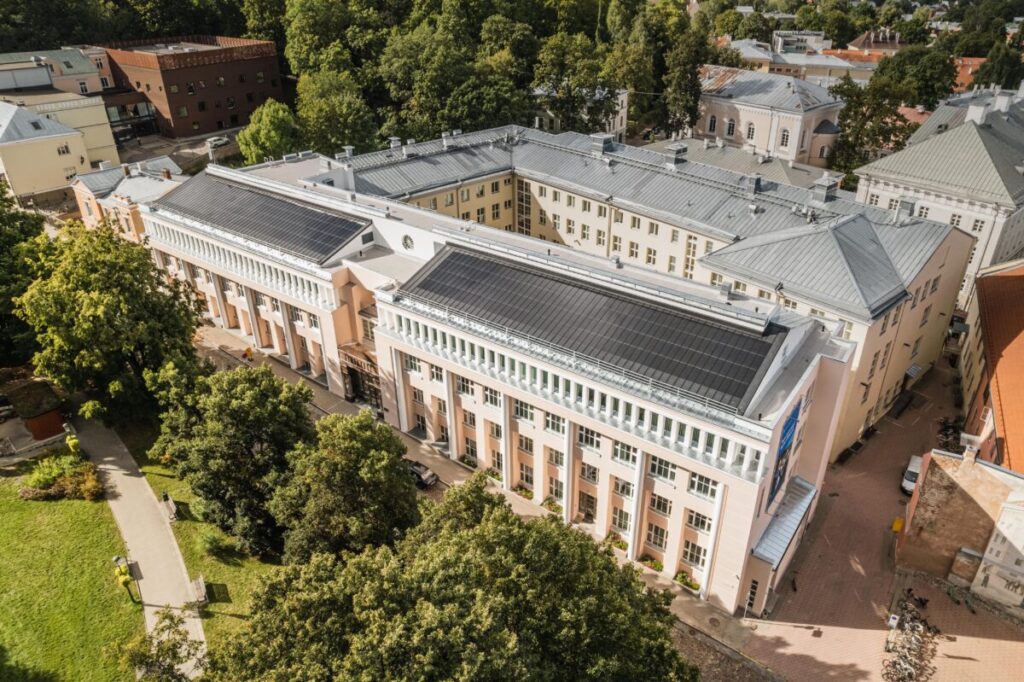Integration of monocrystalline solar cells with metal-standing seam panels, deaf and solar energy sees a chance in retrofit and new-build properties. PV -Magazine In catching up the main growth -officer Greg Grace to discuss the switch to Topcon, adding color, energy security and pitching solar energy to the Prince of Wales.
Estonian manufacturer Roofit.solar has made the switch to Topcon and revealed plans to add a new range of colored metal roof panels with integrated monocrystalline solar cells. Chief Growth Officer (CGO) Greg Grace told PV -Magazine The extensive range brings more power and aesthetic options for the building-integrated photovoltaic segment (BIPV) segment.
Making the shift of passivated broadcast back contact (PERC) BIPV panels to Topcon has added 30 W per square meter to Daksis. Solar’s reach in strength assessment, Grace said, while the launch of colored panels is “big news” for a company with a focus on aesthetics.
Roofit.Solar’s new core range of black BIPV sun roof panels has a similar output as a typical topcon panel, said Grace, with a power assessment of 190 W/m². The new color variants have slightly less output, depending on the selected color, he added, but more aesthetic options should expand the range of buildings where the installation would be possible. The colored range includes terracotta -red, copper green and slate gray variants with power reviews of 136.2 W/m², 151.4 W/m² and 174.1 W/m² respectively. Roofit.Solar confirmed that the assessments are for the time being, but are expected to be confirmed during certification.
Ropit.Solar has already deployed the Perc variant of its BIPV solution on heritage properties in accordance with listed building regulations, such as an installation of 80 kW in the National Library of Estonia and a 45 kW roof for the University of Tartu. In the coming years, Grace sees even more chance of the Retrofit market, in particular because new building regulations in the European Union and other markets are in force -establish new standards for energy efficiency.
“If we look at the UK, about 40% of the houses were built before the Second World War, so you have a fairly large building stock that is older. One in five houses in the UK, probably also in Germany, are heritage or protected sites and you can’t easily put solar energy on your roof. Homeowners are looking for a solution,” said Grace.
For commercial and industrial properties, weight can be an important consideration and especially with the adjustment. Grace claimed Roofit. Solar’s panels can offer 30% weight reduction compared to installing a new roof with mounted modules. The black Velario slim sun roof panels of the company and black click-seam Nuclick 2.0 panels weigh 11.3 kg in the variant of 471 mm x 1402 mm and 16.5 kg for the 471 x 2044 mm panel. The smaller panels have a nominal force of 120 W and the larger 180 W.
In addition to the building regulations, the concern of energy security can also stimulate the demand for BIPV solutions according to Grace, who said that Roofit.solar has so far carried out three installations in Ukraine, with more in the pipeline. The roofs integrated by PV were installed on houses in family style in Ukraine that will accommodate foster families that ensure children who pointed in the war.
“That is something important if you look at solar energy, to have energy and energy dependence,” he said.
Image: Roofit.solar
Grace also had the opportunity to discuss the work of the company with the Prince of Wales during his first diplomatic visit to Estonia. The United Kingdom has quickly become a focus for Roofit.Solar and is now the number one market for the company since the launch in the country in 2024. The emphasis on the possibilities he sees for UK BIPV, Grace left the future King a digital mock-up of Westminster Abbey with Roofit.solar panels.
There are also plans for more commitment outside of Europe. Ropit.Solar will soon enter the American market with a product certified according to UL Standards, with intentions to launch in the summer of 2025.
More BIPV products are also located in the pipeline, including a BIPV panel with anti-glare glass, of which Grace said it is being developed to meet the demand for airport installations and other applications that require anti-glare solutions.
Prince William is also not the only royal who has shown interest in the products of the company. “We quoted a few palaces with our panels, not in the UK, but hopefully we will do that,” said Grace.
Roofit.Solar, located in Tallinn, produces its products in Estonia and China and, according to Grace PV-integrated metal, has installed standing seam roofs on more than 2,000 roofs worldwide. All research and development work is carried out in the Estonian capital.
This content is protected by copyright and may not be reused. If you want to work with us and reuse part of our content, please contact: editors@pv-magazine.com.
Popular content


